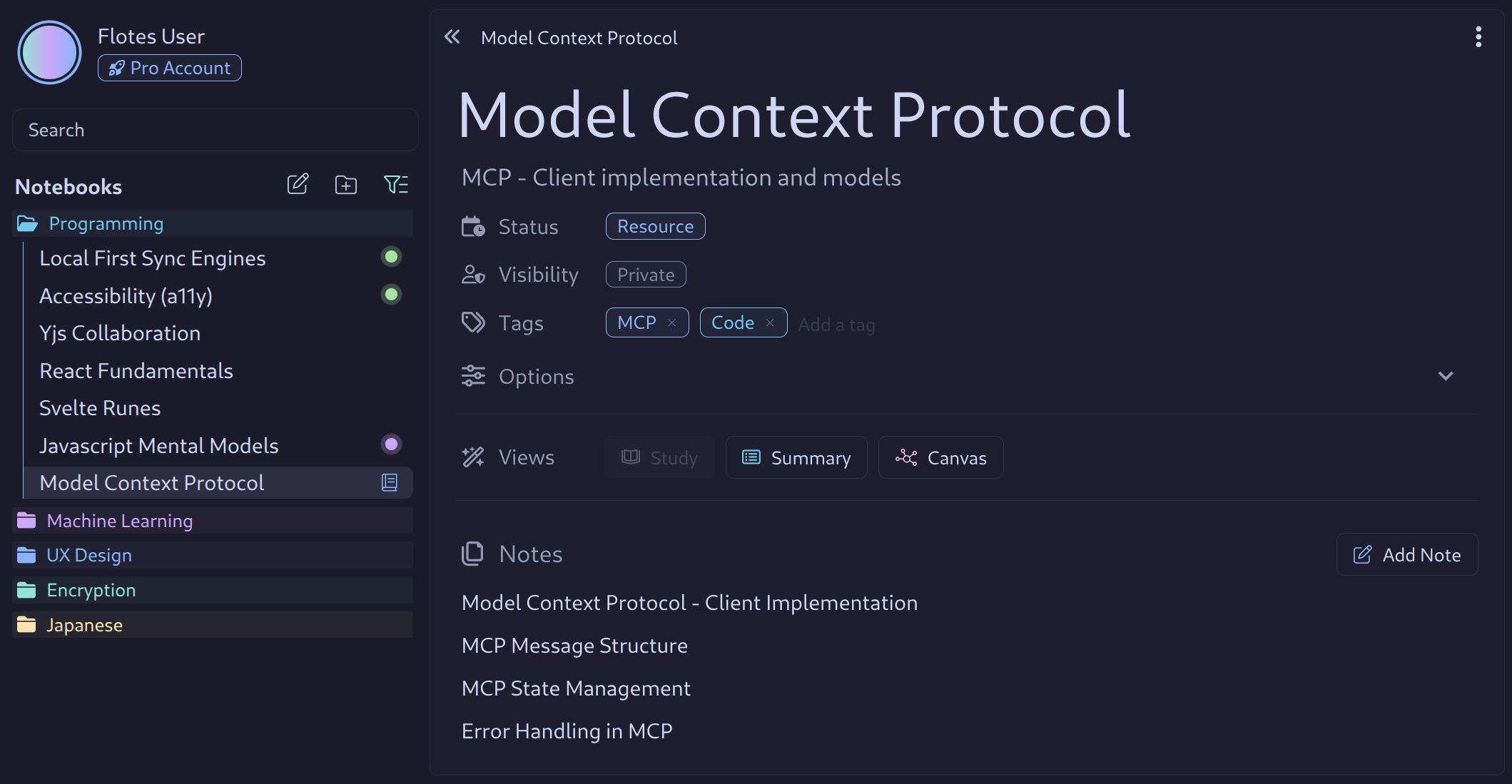Categories

Each notebook in Flotes can be further organized into categories:
- Active (default): The standard state for notebooks you’re currently editing and studying. This is applied implicitly unless another state is selected. Active notebooks are sorted and prioritized by their review status.
- Resources: Notebooks with referential information that do not need to be studied.
- Archives: Notebooks that are no longer in active use.
These states help you keep your workspace focused by separating active work from reference materials and completed content.
Why Mark as Resource?
Section titled “Why Mark as Resource?”Marking a Notebook as a Resource distinguishes that the Notebook is not meant to be studied or use spaced repetition. Resource-Notebooks show up at the bottom of your active Notebook list, unless archived.
- Reference material like links, sources, or authors
- A scratch pad for future ideas, todo items, or drafts
- Information that is purely referential and doesn’t need reviewed
Why Archive a Notebook?
Section titled “Why Archive a Notebook?”Archiving a notebook in Flotes hides the notebook behind the archive filter:
- Keeps your active notebook list organized and focused on what currently matters
- Allows you to pause a notebook’s spacing review
User Defined Tags
Section titled “User Defined Tags”You can also assign custom tags to a notebook. This can be useful for filtering large amounts of active notebooks or resources by topic or context.
Tags can provide a lot of organizational benefit, without having to restructure your notebooks.
- Create overlapping categories
- Provide additional context
- Filter by theme or topic